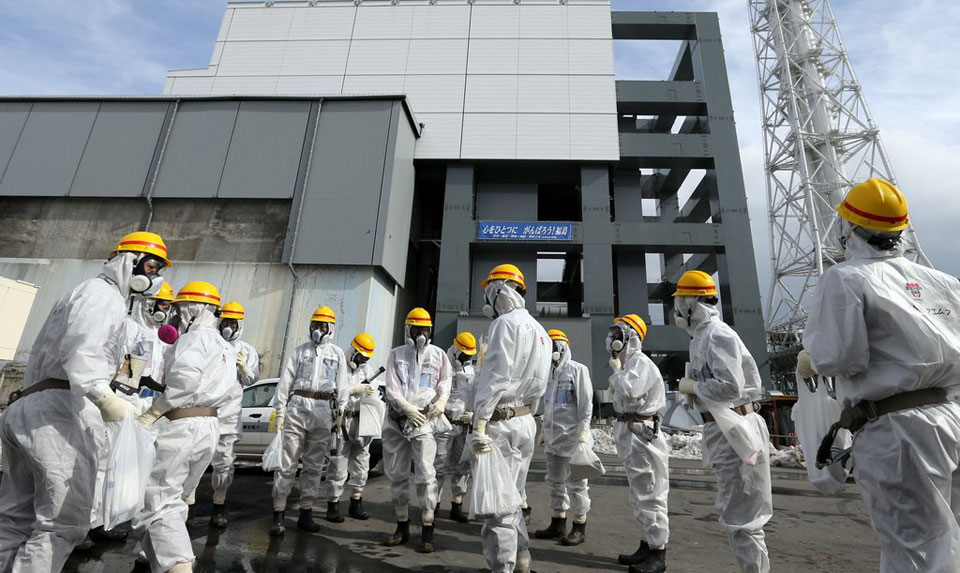
Next month will mark eight years since the nuclear meltdown at the Fukushima Daiichi Nuclear Power Plant. The NPP operator, Tokyo Electric Power Company (TEPCO), says that it will soon conduct a probe into the containment vessel of the No. 2 reactor in order to find out the condition of the melted nuclear fuel inside, which means that TEPCO has yet to obtain even such basic information.
TEPCO officials recently said to Akahata that high-risk zones in the Fukushima Daiichi plant have become smaller and that now workers do not need to wear a full-face mask and a protective suit in 96 percent of the plant premises. This is because the level of radioactive materials in the air has decreased as a larger area of the site is now covered with concrete, according to officials. At the crippled nuclear power plant, the number of workers coping with the aftermath of the 2011 nuclear accident, though, is still more than 4,000 per day.
However, the hidden reality regarding contamination risks seems to differ from the impression the utility wanted to create by citing the figure “96 percent.” In a recently published survey of Fukushima workers conducted by TEPCO, of the respondents who are anxious about their exposure to radiation, nearly half feared that their health would be damaged in the future. In another question in the same survey, more than 40 percent were concerned about working at the nuclear power plant.
The most common reason for their concern was that they have no idea how long they need to work at the plant because it is unclear how much work remains to be done. They are also worried about the risk of radiation-induced health damage in the future with no guarantee of a stable income. Without a worker-friendly environment, the decommissioning of the crippled reactors will be extremely time-consuming.
The storage of radiation-contaminated water is another major issue. Around 100-150 tons of polluted water is produced every day at the plant, which means that a 1,000-ton tank is filled up in seven to ten days. Currently, around 1.1 million tons of radioactive water are stored on the plant premises, but under TEPCO’s plan, the maximum planned storage capacity is only 1.37 million tons.
In another survey of residents conducted by municipalities near the Fukushima plant, among the respondents who decided not to go back to their hometowns and who cannot decide whether to do so, many cited worries about the safety of the plant as a reason.
The government of Prime Minister Shinzo Abe, however, is still encouraging Fukushima evacuees to return to their homes, but as the nuclear disaster drags on.












Comments